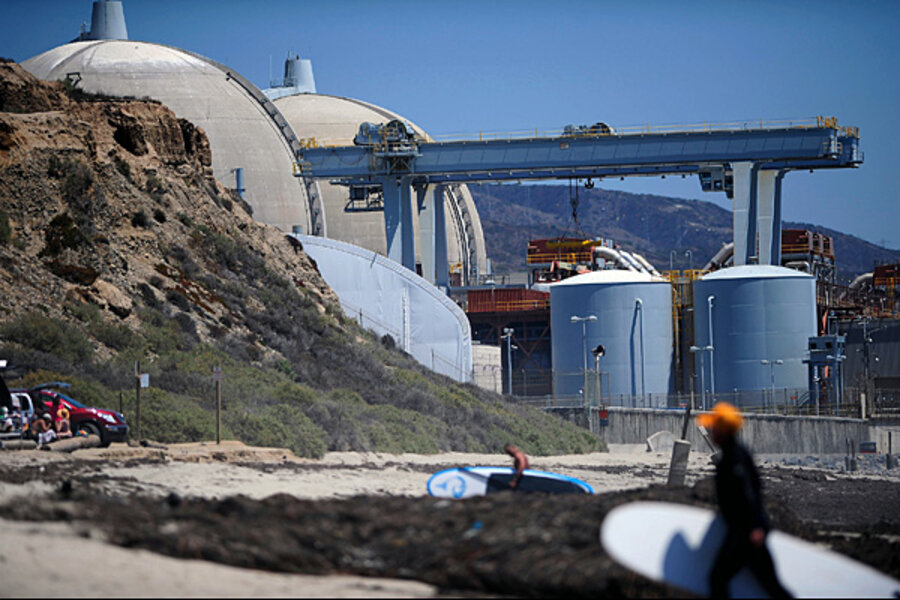Senator Boxer calls for probe on California nuclear plant
Loading...
The operator of a California nuclear plant is under fire from a US senator for allegedly misrepresenting the nature of an equipment upgrade that resulted in a small radioactive leak at the plant last year.
It's another blow to Southern California Edison (SCE), which has worked to reopen the closed San Onofre Nuclear Generating Station for over a year. The fallout has cost the company more than $553 million and drawn attacks from environmentalists who say the plant is inherently unsafe.
On Tuesday, Sen. Barbara Boxer (D) of California released a private company letter she says is evidence of the company intentionally misleading regulators in order to avoid an extensive safety review of upgrades to San Onofre. She has called on the Justice Department to investigate.
"Given this new information, it is clear to me that in order for this nuclear plant to even be considered for a restart in the future all investigations must be completed and a full license amendment and public hearing process must be required," Ms. Boxer said in a statement Tuesday. "This is simply a common sense approach."
The plant closed in January 2012 after a radioactive leak led to the discovery of wear in tubing that carries radioactive water. The unusually rapid wear was blamed on new steam generators that were installed in 2009 and 2010.
That upgrade did not require an extensive review by the Nuclear Regulatory Commission, SCE initially said, because the new generators were close enough in design to the original generators.
A November 2004 letter between an SCE executive and the manufacturer of the new generators suggests both companies knew of major design differences but publicly downplayed them in order to avoid extensive NRC review, Boxer said Tuesday. The announcement was first reported by the Associated Press.
"This will be one of the largest steam generators ever built for the United States and represents a significant increase in size from those that Mitsubishi Heavy Industries has built in the past," Dwight E. Nunn, vice president of SCE, wrote in the letter. "It will require Mitsubishi Heavy Industries to evolve a new design beyond that which they currently have available."
The letter is evidence of detailed involvement in the upgrade process, according to a response from SCE, and the company applied for and received two license amendments for the replacement steam generators.
“SCE’s own oversight of MHI’s design review complied with industry standards and best practices,” Pete Dietrich, SCE senior vice president and chief nuclear officer, said in a statement. “SCE would never, and did not, install steam generators that it believed would impact public safety or impair reliability.”
Before its closure, San Onofre was the state's largest source of electricity, capable of generating up to 2,200 megawatts, enough to power 1.4 million homes and businesses. Like all nuclear plants, San Onofre emitted virtually zero carbon emissions.
Still, the plant drew criticism for its location on the California coast between Los Angeles and San Diego, vulnerable to tsunamis and seismic activity. The 2011 Fukushima nuclear disaster in Japan heightened concerns that a similar event could occur at San Onofre, despite the company's assurances the structure was built to withstand earthquakes.
“The restart of San Onofre reactors is now off the table," Damon Moglen, climate and energy director for environmental group Friends of the Earth, said in a prepared response to the release of the letter. "No one can possibly argue for the further operation of these crippled reactors when such an experiment places the lives and livelihoods of millions of Southern Californians at risk.”








